When many of us thought we’d be returning to a ‘normal’ existence this year, the reality has hit us hard: returning to ‘normal’ is not going to happen (at least not anytime soon).
Over the last few weeks, I’ve heard some self-help gurus and influencers make the following claims:
• “You are the creator of your own destiny”
• “You can do anything you put your mind to”
• “If you just visualise what you want, the universe will manifest it into being!”
Alarm bells go off for me whenever I hear these sorts of statements.
Yes, I somewhat agree. If you focus your mind, have clear goals, effective strategies and consistently engage in the right behaviours, you’ll be amazed by what you can achieve.
But I get a little annoyed when these ideas are presented in an overly simplistic way. What many self-help gurus and influencers fail to do is give people practical tools and evidence-based strategies that will help them to change their behaviour and reach their goals.
Without practical tools and strategies, we are setting people up to fail.
Stanford University Professor BJ Fogg states in his book Tiny Habits:
“For too many years, myths, misconceptions, and well-meaning but unscientific advice have set you up to fail. If you’ve attempted change in the past and haven’t seen results, you may have concluded that change is hard or that you can’t succeed because you lack motivation. Neither is accurate. The problem is with the approach itself, not with you.”
In this blog post, I’m going to share Professor BJ Fogg’s simple but powerful method for changing behaviour: tiny habits.
When life feels hard and you’re struggling to find the motivation to get through the day, you need to scale things right back.
How do you do that?
You need to make whatever you need to do seem really easy for your brain. This is where tiny habits come in.
A tiny habit is a behavior that can be performed in less than 30 seconds and requires little or no willpower. The radically small behaviour sets you on a path to achieving your goals.
Tiny habits allow you to have a predetermined plan for each day. Without tiny habits, you can wear yourself out just deciding what to do. Tiny habits automate your behaviour and make it easy for you to get on with doing what you need to do.
According to Professor BJ Fogg, a tiny habit is made up of three key parts:
• An anchor moment (i.e., prompt).
• A tiny version of a desired new behaviour.
• An instant celebration.
I’ll unpack each of these parts before bringing it all together with a few examples from my own life.
An anchor moment is a pre-existing habit that reminds you to carry out the new tiny behavior. Examples of common anchor moments include putting on your shoes, brushing your teeth, having dinner, checking your phone, and taking a shower.
Anchor moments are solid and reliable parts of your daily routine. You do them every day without fail. These routines act as a trigger for the new tiny behaviour, propelling you into action.
The tiny behaviour should require little to no effort or willpower to carry out. For example, if the desired behaviour is to floss your teeth, the tiny behaviour would be to floss one tooth. If you want to do more than the tiny version, go for it. But consider that’s a bonus extra. By carrying out the tiny behavior every day, you keep the habit alive and give it a chance to establish solid roots in your life.
If you want to fast track habit formation, you must do one simple thing — celebrate. Milliseconds after you engage in the new behaviour, you need to release a positive emotion. Instantly.
It’s this instant release of good feelings that will remind you to do the behaviour again in the future.
What does celebration look like? Here are some ideas from my own life:
• Do a fist pump.
• Say out loud “Shazam!”.
• Say “Winner winner chicken dinner!”.
• Drum a punchy beat on the table.
The following is a list of tiny habits that help me to think, feel and function better. These tiny habits are focused around eating well, moving my body, getting plenty of rest, decreasing stress and managing my mindset.
1. After I make my bed, I will put on my walking shoes on.
2. After I have my breakfast, I will think of three things I feel grateful for.
3. After I put on my walking shoes, I will have a sip of water.
4. After I finish a writing session, I will take out a broccoli to chop.
5. When I arrive at a school, I will sanitise my hands and carefully put my mask on.
6. When I open up Zoom (or Teams) to deliver a presentation, I will take a deep breath and say “You can do this!”
7. After I set my intentions/goals for the day, I will put my phone away from my body (in another room).
8. When I find myself feeling overwhelmed, I will take out a post-it note and write down one thing I can do.
9. When my head hits the pillow, I will write down three things that went well today.
10. When I find myself feeling stressed, I will do a big sigh.
11. When I find myself feeling stuck, I will think “Who can I ask for help?”
These tiny habits are currently working for me. But they may not work for you. You can design your own tiny habits from scratch by pairing up anchor moments with desired tiny behaviours (don’t forget to celebrate!).
Alternatively, you can create your own tiny habit recipes by using the Tiny Habits Recipe Maker.
You can also check out Dr BJ Fogg’s great book Tiny Habits (there is a long list of tiny habits at the back of the book).
Visualising what you want is never going to be enough to make it happen. You need to be in action. I’ve found the tiny habits method to be a great way to shift from inaction to action, especially during challenging times.
Like anything in life, using tiny habits requires practice. But the more you practice this skill, the better you’ll get. And the better you get, the better you’ll start to feel about yourself and what you’re doing.
Share This:
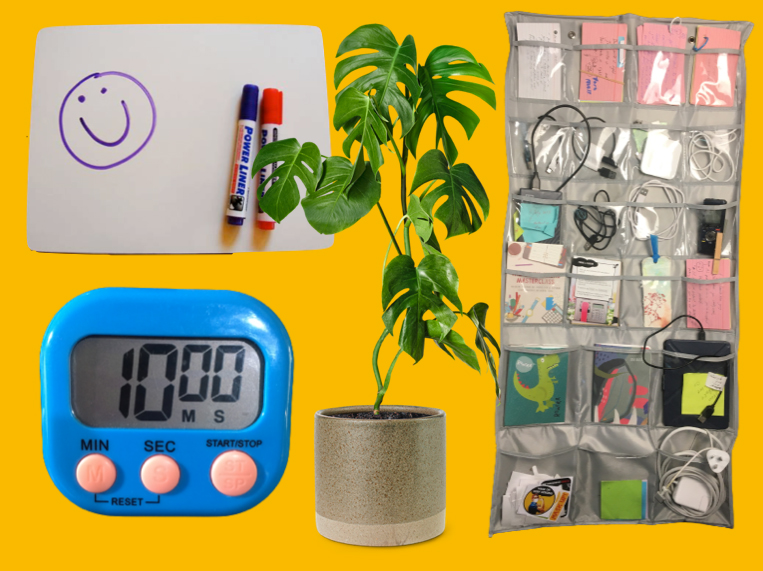
You need to start by doing something different.
As Paul Taylor says in his book Death by Comfort:
“Nothing changes if nothing changes”.
Over the years, I’ve read a lot of books and articles on the psychology of behaviour change. One thing is clear from the research literature: it’s much easier to change your behaviour by changing your context rather than changing your thoughts and attitudes.
In other words, the simplest ways you can create change is to set up your environment to make it easier to do the things you want to do and harder to do the things you don’t want to do.
In this blog, I explore different ways you can tweak your study space to make it easier for you to study and harder for you to get distracted.
Timers are super handy tools, especially when you’re lacking motivation.
Whenever I’m avoiding a task or not feeling in the mood to do something, I’ll say to myself “Let’s just do 10 minutes”. I start the timer and off I go. Usually by the 10 minute mark, the motivation has kicked in and I want to keep going.
Using a timer is a simple and easy way to push through mental blockages. It can also create a sense of time awareness and prompt you to take regular breaks.
Charging cables, flashcards, mini notebooks, and USB sticks: these are just a few examples of random little items that we need. But where do you put this stuff?
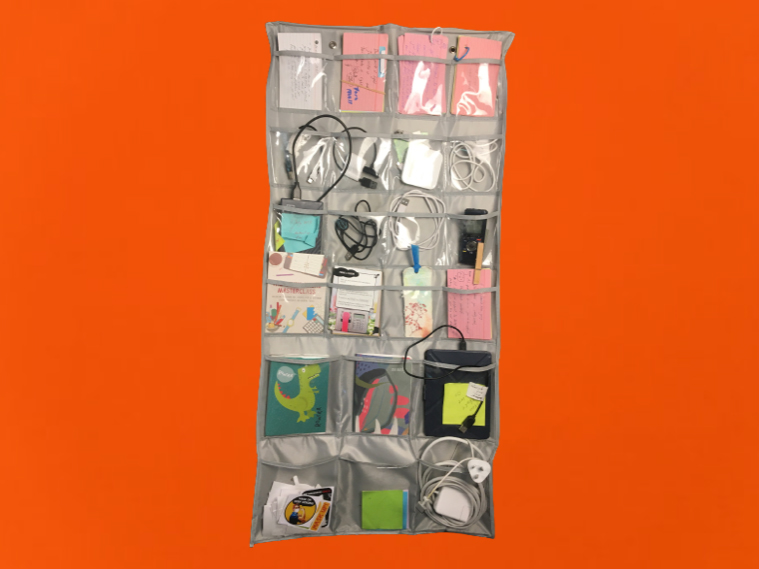
A vertical wall hanger with clear pockets (typically used for storing jewellery) works well for storing and separating these random but important items.
Feeling stressed in your study space? Perhaps it’s clutter that’s getting you down.
Take a moment to scan your environment. If your eyes land on a pile of objects and you find yourself feeling stressed and/or overwhelmed, take those items and dump them into a box. Now take that box and put it in another room. You can sort through these items later on.
Staying hydrated is super important when it comes to learning. Research shows even mild dehydration can impact students’ ability to learn and remember information.
But if there’s no water in sight, you’re probably not going to be taking regular sips.
I have a reusable drink bottle but some people find having to unscrew a lid a barrier to taking sips. If that’s you, have a jug of water and a glass nearby. You might also enjoy using a reusable straw (stainless steel or glass).
Being hungry sucks and it doesn’t serve you when it comes to learning. Your brain needs energy to think and learn. Where does it get that energy from? Food.
Make a start on stocking your fridge and pantry with plenty of healthy snack foods. My favourite snack foods include blueberries, strawberries, and pretty much any fruit, nuts, veggie sticks, and soy yoghurt.
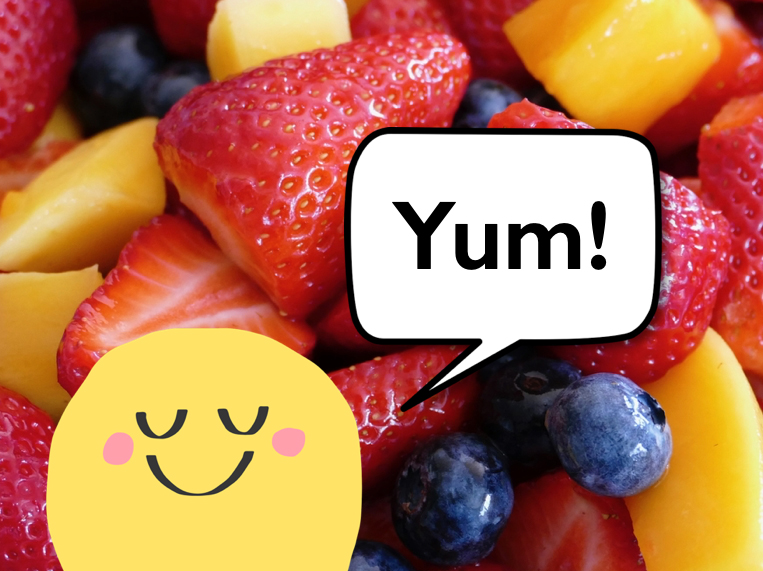
While you’re at it, get rid of any tempting ultra-processed junk food. This junk will mess with your ability to think and learn.
If I can’t see my work and items I need, they don’t exist. This is why I always store important items in clear storage containers and write things I need to do on bright yellow paper and colourful post-it notes. If it’s out of sight, it’s out of mind.
One trick I use is leaving myself post-it note reminders of what I need to do next after I complete each work session. These notes give my brain a clear direction of what it needs to focus on next, which means I’m less likely to get derailed.
When there’s a lot of things happening and multiple projects on the go, it’s easy to lose track of what you need to do.
Using open storage systems (e.g., open bookshelves or pigeonhole units) can be another effective way to keep track of all your projects. I use a pigeon hole to organise all my projects. This keeps them in sight and in mind.
I remember an academic coach once saying to me, “If you start the day by checking your email, you’ll be 10% less productive”.
She was spot on.
When you start the day with devices, this puts you in reactive mode. You feel less in control.
Here’s a little psychological trick I use to get myself into proactive mode: I lock my phone in a kSafe for the first 30 minutes of the day. My phone is already placed in the safe before I go to bed, which means all I need to do is spin the dial and press the button when I get up in the morning.
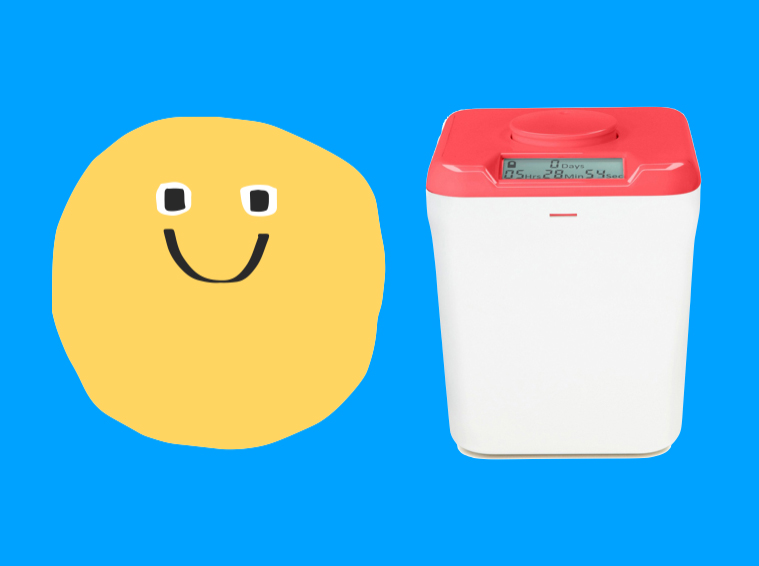
This simple action signals to my brain that I’m in control of my day (and not big tech).
Of course, you don’t need to buy a kSafe to stay off your phone. Placing your phone in a drawer (out of sight) or in another room will also do the job.
You use them to mow the lawn, but a pair of earmuffs work wonders for blocking out noise while you’re trying to study.
They also have signalling power. When you put them on, it signals to others (and your brain) that you are in work/study mode. When you take them off, you are free to play, rest, and do whatever you like.
Having a yearly planner stuck up on your wall can help to create a sense of time awareness. You look up at the planner and you can see in one glance how much time you have between now and when a project is due or when an exam is scheduled.
Indoor plants have been found to boost creativity. But certain types of indoor plants, such as English ivy and the Money plant, also purify the air.
You don’t need to create a jungle to experience the benefits of indoor plants. One or two plants in nice colourful pots is all you need to freshen up your space.
Have you considered working on your feet and incorporating some movement into your study sessions?
Active workstations, such as sit-stand desks, cycle desks, and treadmill desks, help to break the sedentary work cycle, get the blood pumping more efficiently up to your brain, and give you a cognitive boost.
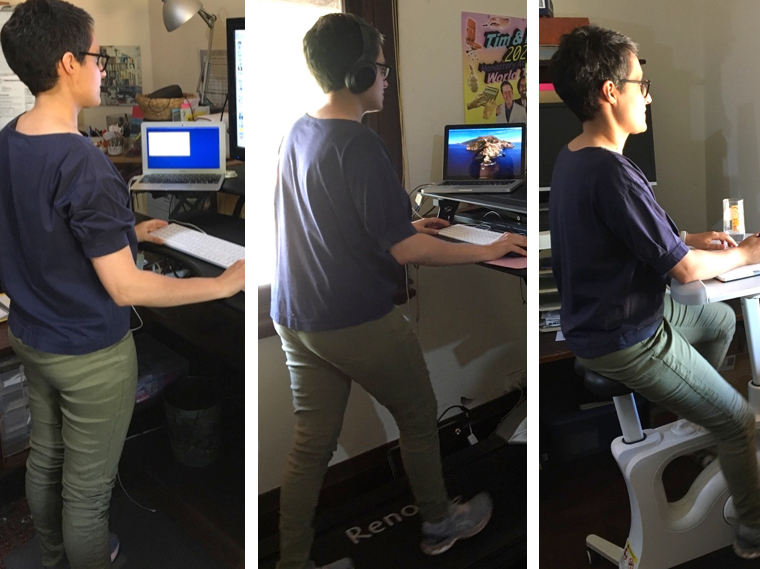
If you prefer to stay seated while you study, that’s no problem. Just make sure you get up and move every 25-30 minutes. Take an exercise snack.
An exercise snack is a quick 30-60 second bout of exercise. I have a few small pieces of exercise equipment strategically placed in my study space to mix up my exercise snacks.
Depending on what you like to do and the space you have available, here are a few ideas:
• Kettlebell
• Dumbbells
• Resistance bands
• Skipping rope
• Gymstick
• Hula hoop
If you feel good in your study space, you’re more likely to want to spend time there. One of the simplest ways to spruce up your space is with colourful and inspiring pictures.
Up on my walls is a colourful world map, a poster from a memorable comedy show I attended with my brother, and a framed piece of children’s artwork.
What do these things all have in common?
They make me feel good. And when I feel good, it’s easier to think, focus, and learn.
After looking at a screen for 25 minutes or so, get down on a yoga mat and do some gentle stretches. If the mat is already rolled out on the floor, it’s a lot easier to get down and stretch your body.
This is a designated spot for all your school items (e.g., books, files, reference materials, unit outlines, practice exam papers, and notes). Need to find something to complete a project or study for a test? There’s only one place it can be: in the magic spot.
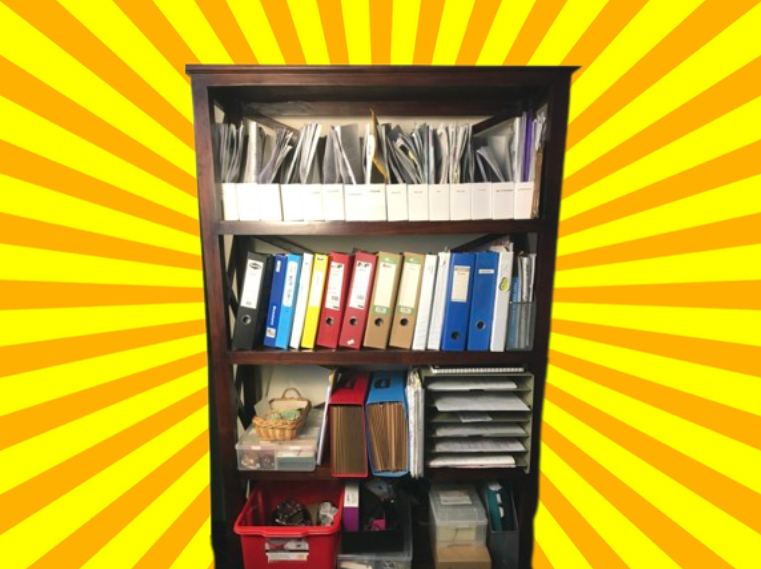
When your work gets difficult, it’s too easy to escape to social media, YouTube, and Netflix. To stop yourself mindlessly checking these apps, activate an Internet blocker app such as Cold Turkey or Freedom.
It’s not just Big Tech companies that can distract us. Often we distract ourselves with all kinds of random thoughts.
How do we handle these thoughts?
You can capture them in a notepad that’s strategically placed within arms’ reach. When a random thought strikes, write it down. You don’t have to act on every thought straight away.
Think of this notepad as your ‘Thought Inbox’. Once you’ve written the thought down, it’s not going anywhere. You can return your focus to the task at hand and deal with these thoughts at a later time.
Ads online are like advertising in public spaces: they constitute visual clutter. They also stir up consumptive desires and frequently throw you off course.
You can eliminate a lot of online ads by installing an adblocker plugin. I use Adblock Plus.
When I’m feeling nervous about putting ideas down on paper, I go to my whiteboard. It’s less scary to jot down ideas on a whiteboard.
If it doesn’t work out, that’s okay. You can easily wipe it all away.
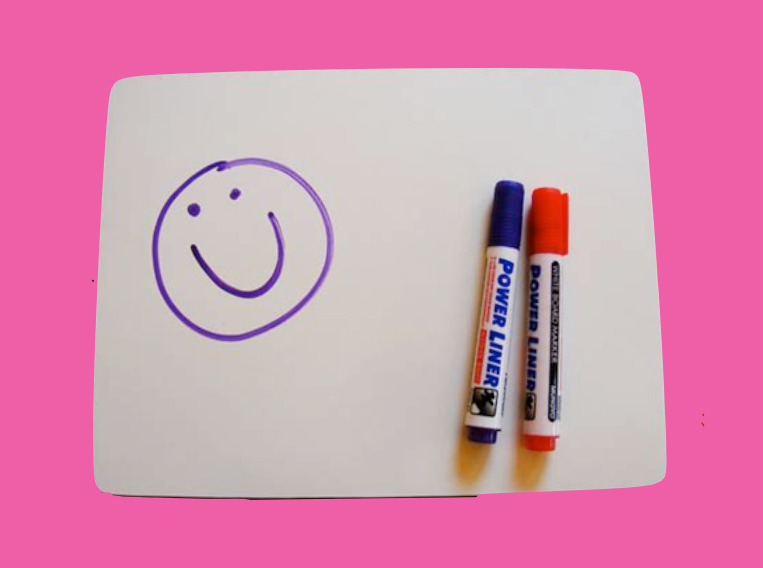
Each of these strategies may not seem like much on their own. But when combined, they can have a big impact on your ability to focus, learn, and get things done.
Like anything in life, the key is not to get bogged down by a sense of overwhelm. You don’t need to make all of these changes all at once. Just get started with one or two.

In their minds:
Beautiful notes = effective exam preparation
But is this the most effective approach to take?
In her book An Insider’s Guide to BA [Bachelor of Arts] Rebecca Jury states:
“Would you sit your practical driver’s test without ever having practised driving a car? Preparing for an exam by only taking notes is like preparing for your restricted driver’s licence by only reading the Road Code. Bad idea.
You need to learn the theory and then practise in the medium in which you are going to be assessed.”
In short, if you want to do well in your exams then you’ll need to do practice exams.
When you do practice exams this . . .
• helps you see how well you understand the subject (it’s a reality check!)
• gives you the opportunity to do active recall (AKA retrieval practice)
• helps you to pinpoint gaps in your knowledge (which is 80% of the battle when it comes to learning)
• gives you a sense of the format and types of questions you’ll be asked
• helps you to build your confidence for the actual exam
But I understand the idea of gathering a pile of past papers and then sitting down to do them can be completely overwhelming.
So, we’re going to break this process down, step-by-step, so it’s not so scary for your brain.

You can gather past/sample exam papers in the following ways:
• Talk to your teacher: This is probably the easiest way to access exam papers. Simply ask your teacher if they have any practice exams and other resources they are willing to share with you.
• Trade exam papers with other students: Reach out to someone you know at another school who is studying the same subject and do a friendly exchange of resources (although I don’t recommend trading notes).
• Visit your State library: Most good libraries have past exam papers and study guides available for students. For instance, The State Library of Western Australia has an extensive selection of past exam papers, study guides, and Good Answer Guides (visit the WACE Study Space on Level 1).
• Government education websites: If you live in Australia, most state government departments that deal with curriculum provide past exam papers online that you can download:
Western Australian: School Curriculum and Standards Authority
Victoria: Victorian Curriculum and Assessment Authority
South Australia: South Australian Certificate of Education
Queensland: Queensland Curriculum and Assessment Authority
New South Wales: Education Standards Authority
Check in with your teacher to see what papers are most relevant. You don’t want to waste your precious time and energy doing a past paper that is based on an outdated syllabus.
• Study guides: These resources are usually created by experienced teachers who are familiar with the curriculum. You’ll want to check a few details before borrowing/purchasing a study guide:
1. What year was the study guide was published?
2. What’s the author’s background and level of experience?
3. Where are they based?
It makes a difference if the author is an experienced teacher who is familiar with your curriculum.
What if you can’t access any past papers and study guides?
Then, worst case scenario, you’ll need to make your own exam paper.
This doesn’t have to be anything fancy. All you need is a series of questions that will force you to bring the relevant information to mind.
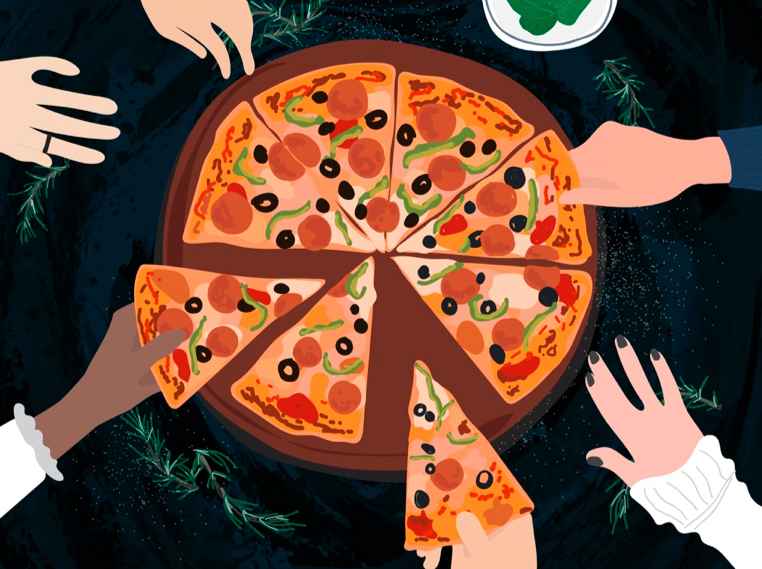
Once you’ve gathered all your practice exam papers, do a lucky dip and pick one. Put all the other exam papers in another room (you’ll deal with them later).
Then, you need to commit to making a start on the practice exam you’ve just selected.
Here’s what you’ll need:
• A clear desk located in a place where you won’t get interrupted or distracted
• A timer
• Several good pens and anything else you’ll need to do the exam (e.g., calculator)
• A friend to share the pain with (optional)
You won’t need:
• Your books and notes
• Your phone
Here’s what you need to expect:
Expect to feel a little uncomfortable doing the practice exam. Chances are you won’t be able to answer several (or a lot) of the questions. You’ll probably feel a little awkward and clumsy, too. That’s okay. Relax. This is a normal part of the learning process.
Don’t like the idea of sitting for a full 2-3 hours to do the exam?
I get it! In fact, I wouldn’t recommend doing that.
It’s best to break it down into small chunks. You don’t want to slog it out in pain for hours on end. You’ll kill the habit before it has a chance to get established in your life.
• Set a timer for 25 minutes and make a start on some questions (without looking at your books and notes).
• Then take a 5 minute break.
• After your break, check to see how you went with the questions you just answered (take note of any weak areas).
• Take another 5 minute break.
• Dedicate some time and effort to improve on those weak areas (use effective study strategies to do this).
• In a few days time, test yourself again on those weak areas.
What you’re doing here is you’re using your the past papers as a tool to guide your study sessions.
If 25 minutes feels too hard, just select one question and do that. Doing one question is infinitely better than doing nothing!

The first exam paper can be a massive shock to your system. Chances are you’ll feel really rusty and you’ll struggle to answer many of the questions. This is normal.
It’s much better that you experience this shock now than in the actual exam. Stay strong and persevere through that first past paper!
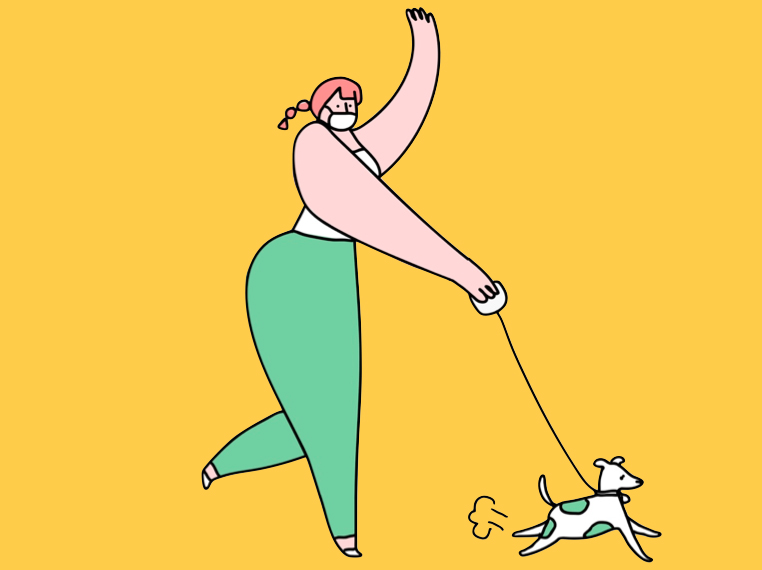
It’s normal for your brain to feel a little fried after completing exam questions. This is why it’s super important to say to yourself things like, “Great job!” and “Keep going champion!” after you finish answering each question.
Also, give your brain regular breaks. Set a timer and go do something fun and/or pleasurable. Make a smoothie. Go for a walk. Crank up some music. When the timer goes off, get stuck into answering another exam question or make a start on studying one of your weak areas.
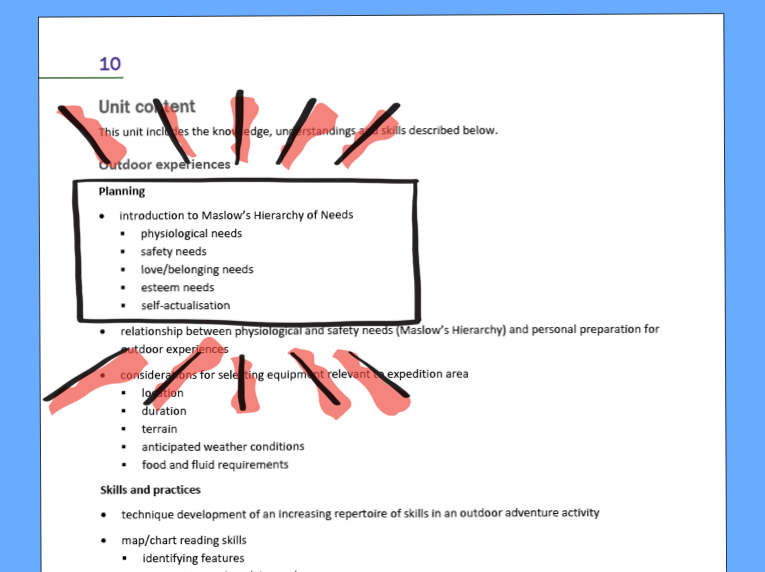
Once you’ve done a few past exam papers for a subject (spaced out over a couple of weeks), you’ll begin to see common themes/topics emerge. Now is a good time to take out your syllabus. Your syllabus, specifically the unit content section, tells you exactly what you need to know for the exam.
Arm yourself with a highlighter or a coloured pen and head straight to the unit content section.
Have a read through this section. If a concept is unfamiliar to you, take note. This is an area you’ll want to look at in a future study session.
Why bother doing this?
Because you’re checking that you’ve covered all your bases. You’re future proofing yourself so there are no nasty surprises in the final exam.
If you take this approach (i.e., doing past papers), you’ll do better than the student who spent all their time making beautiful sets of notes.
Yes, it can be a little painful and a bit of a shock to the system to do a practice exam. But remember, it’s better to experience the shock now than in the actual exam!
With this usually comes shiny new pens, fresh notebooks and renewed hope and optimism. But this year feels a little different . . .
Last week I heard someone say:
“It’s only January but it feels like it’s the end of the year. I’m so over it.”
Can you relate?
In this blog post, I want to share with you a strategy I use to make difficult things easier to do. In other words, it’s a strategy that can make studying challenging subjects a little easier.
The other day I did my first job at a school. I’d been asked to run some study skills sessions with the senior school students.
Before I started running the workshops, I had a brief conversation with a year 11 student. It went something like this . . .
Me: How are you feeling given the situation (i.e. COVID-19)?
Year 11 Student: Some of us are stressed but it’s not because of COVID. It’s because of what our teachers have just said to us.
Me: What have your teachers been saying to you?
Year 11 Student: They keep saying this year is going to be really hard. The subjects are going to be much harder.
On my way home from the talk, I thought about what this student had said. I thought about the stressed look in her eyes.
Here’s what happened . . .
I had been asked to present a talk to 150 year 10 students. My talk was scheduled for the last period of the school day.
In case you’re not aware, the last period of the school day is not an ideal time slot for a guest speaker. It’s usually a tough gig because students are tired and they just want to go home.

When I arrived at the venue to set up, I saw two teachers. I introduced myself to them. One of them said in an alarmed tone:
“Oh! You’re the guest speaker? I just need to warn you that these students are a horrible group. They do not warm to guest speakers!”
She continued on . . .
“Does your talk have a structure to it? Do you know what you’re talking about? These year 10s are a really hard group to work with!”
I felt my stress levels begin to rise and by accident, I knocked my glass of water off the stage and it broke. Glass went everywhere. Instead of helping me pick up the glass, the teacher said:
“Look! It’s a sign of things to come!”
At this point, the young IT guy arrived to help connect my laptop to the AV system. He overheard this teacher banging on about what a bunch of ratbags these students were. He looked kind of shocked. He said to her:
“Why are you saying this to our guest presenter? I don’t think it’s helpful.”
The teacher reacted defensively. She blurted out “She needs to know! It’s important we tell her!” and then she left.
I took some deep breaths and continued setting up my stuff.
The students arrived.
I delivered the talk.
The talk went really well.
It turns out these students weren’t horrible at all. They were normal students who happened to be a bit tired and over it.
I learnt an important lesson that day: Worrying about how hard something is going to be doesn’t help. It just uses up your precious brainpower and energy that you could have spent doing something else (i.e. something more productive).
Whenever I focus on how hard something is going to be, I’m filled with fear. Imposter syndrome and self doubt kicks in (“Will I be able to do this? What if I fail and it turns out to be a total flop?”). This usually leads to a bad case of avoidance and procrastination.
In the book Make It Stick, Peter Brown explains:
“A fear of failure can poison learning by creating aversions to the kinds of experimentation and risk taking that characterize striving, or by diminishing performance under pressure, as in a test setting.”
If you feel worried that you’re not going to be able to perform well in a subject, this is going to use up a big part of your working memory capacity. Instead of thinking about the content, you’ll be thinking, “Am I going to be able to do this? What if I can’t? Should I drop the subject?”.
In short, you’ll have less brainpower to learn in class.
There’s a simple question I ask myself when something feels really hard. And it’s this . . .
Professor BJ Fogg calls this the Breakthrough Question. According to Fogg there are three ways you can make any behaviour easier to do:
1. You can increase your skills
2. Get tools and resources
3. Make the behaviour tiny
In his book Tiny Habits he explains:
“Regardless of what your aspiration is, increasing your skills, getting tools and resources, and making the behaviour tiny are what makes things easier to do. . .
Sometimes all you’ll need is the right tool to make a new habit easier to do, like using skinny floss [for flossing teeth], and other times all you have to do is scale the behaviour back to its tiniest version, such as flossing just one tooth. Think of making something easy to do as a pond with three different ways to enter the water. Whether you jump off the dock, wade in at the beach, or drop in from a rope swing, you’ll soon be swimming in the same water.”
In other words, you have plenty of options!
There are lots of things you can do to make studying those so called ‘hard’ subjects a little easier.
So with that in mind, here is a short list of ideas to get you kick-started:
If you can focus better, you can learn and retain more information. If you find yourself constantly checking your phone, put it on silent and away from your body before you sit down to study.
Strategies such as active recall (e.g. flash cards) and dual coding (e.g. mind mapping) are way more effective than rereading and highlighting your notes. Like any new skill, they take a little bit of time to get used to, but they’ll save you a lot of time in the long run.
Some textbooks explain ideas better than others. The textbook on your school booklist is not the only one (or necessarily the best one) out there, so don’t feel wedded to it. Check out other study guides and resources.
A good night’s sleep allows you to focus better in class, retain more information and feel better. Make sleep your top priority.
If you’re confused, don’t suffer in silence. Ask your teacher for help. That’s their job.
Make life easier for your future self by jotting down key ideas in class. If something is confusing, make a note (you can focus on that in a study session at home).
Create some kind of system to organise your notes, past exam papers and handout sheets. Over time, you may need to tweak and refine your system but that’s okay (I’ve been tweaking and refining my system for years).
If you feel overwhelmed by the idea of doing several hours of study each day, start with just five minutes. Five minutes of study is infinitely better than doing nothing!
Once you’ve developed the habit of sitting down and studying for 5 minutes, you can ramp it up. But start small.
When you do manage to sit down and do a little study, congratulate yourself. Say to yourself, “Good job!” This positive reinforcement makes us feel good and when we feel good, it helps wire in new habits.
When your teachers says, “This subject is going to be really hard”, what I think they’re trying to communicate to you is “You need to actually sit down and study. You can no longer wing it.” Instead of worrying, simply be in action.
You’ll feel better and do better if you focus on doing the things that make studying that subject a little easier.
Dr Jane Genovese delivers interactive sessions on learning to learn, combating procrastination, exam preparation, how to focus in the age of distraction, habit formation and much, much more!
Get FREE study and life strategies by signing up to our newsletter:
© 2024 Learning Fundamentals